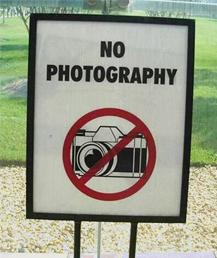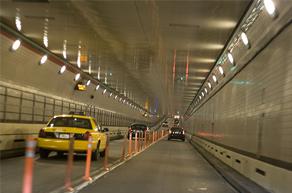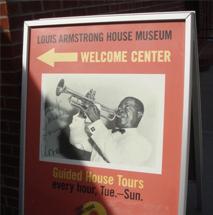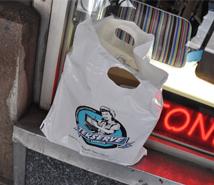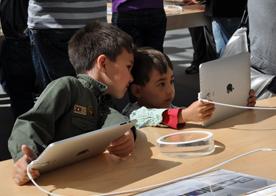Stop - Don't Shoot! - Steve Rosenbaum - MediaBizBloggers

In case you haven't noticed, we're smack in middle of a social media revolution. And while text is driving blogs and Twitter, the real change in behavior that reflects both new technology and new behavior is what's happening with images.
Photographs and video are being recorded, uploaded and shared in a way that represents a new kind of visual real-time communication fueled by devices, bandwidth and humans who want to share what they're seeing with their friends and followers.
This Social Media Photo Revolution is underway. And for brand marketers, retailers and locations open to the public, it means they need to re-think their policies toward cameras in their places of business.
Do you have a Public Photo Policy? If you do, it may be broken and you don't even know it.
Let me explain.
We've all been places with big signs that command "no photographs." When you're driving into the Queens-Midtown Tunnel there's a great big "no photos" sign. I get that. A fear of terrorism means the authorities don't want people documenting the structural elements surrounding the tunnel and how it's laid out or where the exits are. Fine. Don't entirely understand it. But I understand security-related restrictions and I'm willing agree that I cannot take pictures in the Queens-Midtown Tunnel.
But that's where it begins.
My first "Don't Shoot" experience was in Corona, Queens, where on a recent Saturday afternoon I took an extraordinary tour of Louis Armstrong's home and amazing flashback to 1970. I really wanted to share the experience on my blog and on Facebook. But when I took my camera out, the tour guide at Louis Armstrong House said, "I'm sorry sir, no pictures."
Now, I have to say I certainly understand this. First of all, flash photography in a small group can be annoying (the house was very crowded) and secondly flash photography can damage artifacts. But nonetheless here's a museum in Corona, Queens, not a place that tourists routinely find themselves. Visiting and blogging and tweeting and posting on Facebook would seem to be a way to get more and more people to come and visit the house.
My suggestion to the friends and fans of Louis Armstrong House, find a way to give people things to photograph, visual images to share, because there is no more powerful social media marketing tool than photographs and images and they're not going away.
After Louis Armstrong House, I stopped at the B&H store in NYC to look at a tripod. B&H has crazy belts and pulleys that carry gear across the ceiling, so I took out my FlipCam to tape a bit, but a security guard stopped me, "No Video in the Store." I was stunned. Really? I was puzzled. "Why not?" I asked. "Management doesn't want store employees to be interviewed and give out bad information." Let that one sink in for a second.
My next experience was the morning that the new Apple iPad was released. I found myself at New York's most comfortable, most friendly Apple store, TekServe on 23rd Street. I walked in and my iPad was waiting for me. I purchased it, a wonderful experience! And then seeing other people enjoying the iPad, I reached into my backpack and took out my digital SLR to start working on a blog post. Click click click. There's a tap on my shoulder "No Pictures in the Store Sir."
Now I'm a glutton for these things and even though I have my iPad I was determined to be able to capture the digital media story about the iPad release, so I jumped on the 1 train and headed to the Apple store on the Upper West Side.
Happily I walked in the door with my Nikon digital SLR from my neck and began snapping away without a complaint in the world. Everyone was more than happy to have me take pictures of the frenzy that was the iPad release, however I dug into my pocket and took out my FlipCam and again, a hand on my shoulder, "excuse me sir no video allowed." Apple, that's crazy!
The irony of this of course is that with an iPhone, or an iPod for that matter, shooting photographs or shooting video is indistinguishable from one another. Video and stills are the same device, simply different buttons. So there isn't really any way the employees at the Apple store, or anywhere else, can know whether I'm recording motion media or stills. And it shouldn't matter.
I couldn't help but ask the totally friendly Apple employee about why there was no video love in the store. Since the store sold and promoted the recording, editing, sharing, blogging, tweeting, and broadcasting devices. All he could say was 'store policy.' Lame.
Okay let's pause for thought. How crazy is that the iPad, opening morning in New York, has a store that specializes in selling devices that are chock full of cameras so people can meet and share digital media suggesting that there's something supersecret about what's going on inside? I get why a fashion designer who's afraid of being knocked-off might ban cameras from their showroom, but Apple? Come on, no one is going to knock-off an iPad by taking video of it. And if Tekserve is enforcing a 'no-photos' policy for privacy reasons, heck guys, folks in public don't have a reasonable expectation of privacy.
So, here are the facts marketers:
- Customers are going to videotape and photograph in your stores.
- Customers are going to tweet and blog and post about their experiences, good and bad, so you're going to have to give them a good experience.
- Make a policy. Post it. If you don't want your employees giving interviews, tell your staff to say no.
- Social media is a good thing - embrace it. Give folks something fun to photograph.
We're in the age where everyone is the media. Everyone carries tools to spread your brand message. If the message is "no" they'll spread that too. So make the digital photo and video message YES and you'll be on the winning side of a fast moving consumer trend.
How 'bout posting this: Having a great experience at our store? We welcome you to take and post pictures and video. Hash tag: #IloveTekServe (better, don't you think?).
Steven Rosenbaum is the CEO and Co-Founder of Magnify.net - a fast-growing video publishing platform that powers more than 50,000 web sites, media companies, and content entrepreneurs to aggregate and curate web video from a wide variety of web sources. Currently Magnify.net publishes over 50,000 channels of Curated-Consumer Video, and is working closely with a wide variety of media makers, communities, and publishers in evolving their content offerings to include content created by, sorted and reviewed by community members. Rosenbaum is a serial entrepreneur, Emmy Award winning documentary filmmaker, and well known innovator in the field of user-generated media production. Rosenbaum Directed and Executive Produced the critically acclaimed 7 Days In September, and his MTV Series Unfiltered is widely regarded as the first commercial use of Consumer Generated Video in US mass media. Steve can be contacted at steve@magnify.net Follow Steve Rosenbaum on Twitter: www.twitter.com/magnify
Read all Steve’s MediaBizBloggers commentaries at Steve Rosenbaum - MediaBizBloggers.
Follow our Twitter updates @MediaBizBlogger


